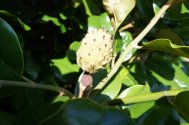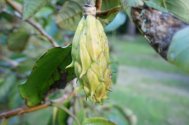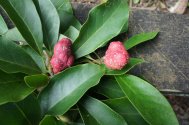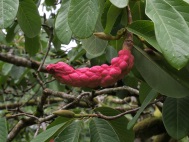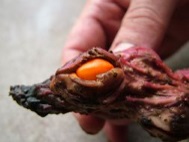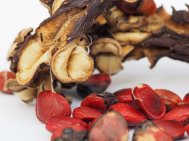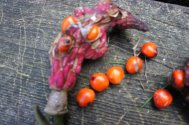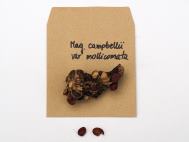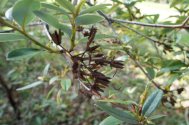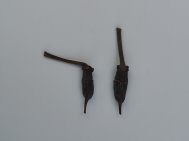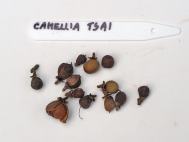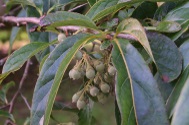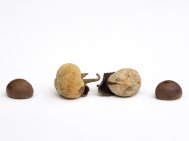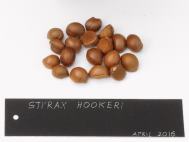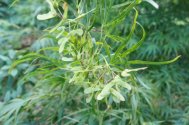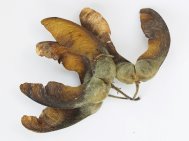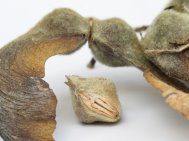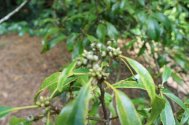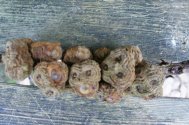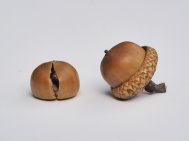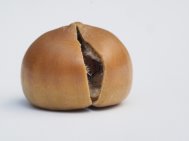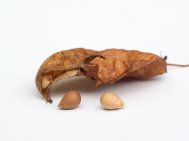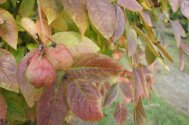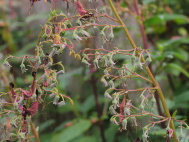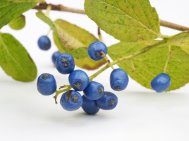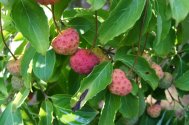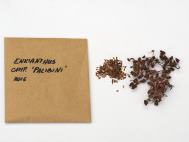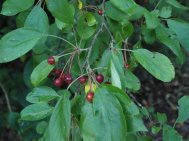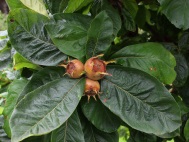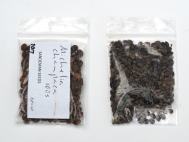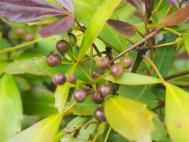- Shop Now
- Burncoose Specialities
- This Month
- Offers & Promotions
- RHS Chelsea Flower Show 2024
- 40 years at Burncoose
- Engage With Us
- Information, Help & Advice
- About Us & Our Services
- Terms & Conditions
- Log In / Register
Chapters
- Introduction
- When is the right time to collect seeds?
- When are seeds actually ripe and ready for collection?
- Magnolia seed collection - Video Tip
- Cornus capitata seed collection - Video Tip
- Lithocarpus Seed Collection - Video Tip
- Rhododendron seed collecting - Video Tip
- Camellia seed collection - Video Tip
- Storing Seeds
- Plants
Shrubs and Trees - Seeds - 1) Collecting Seeds
Introduction
This three-part article covers collecting, storing and planting woody shrub and tree seeds.
1) Collecting Seeds.
2) Storing Seeds.
3) Planting Seeds.
When is the right time to collect seeds?
Every tree and shrub has its own timetable for deciding exactly when its seeds are ripe and ready to gather in each autumn.
Not every autumn is the same and seeds on individual plants may become ripe earlier after a hot late ‘Indian’ summer as opposed to a mild wet one where growth continues for longer and leaf fall is later.
Therefore you need to identify trees and shrubs which show clear signs of setting seed in September and observe them closely on a weekly or even daily basis into October and November.
Of course not all trees and shrubs produce seeds every year and some may only do so occasionally. If flowers are frosted or damaged by wind in the spring cross pollination may be impossible and no seeds will set. After a wet summer and a good growing year a plant may well feel no need to set seed to ensure its continuing survival. Conversely when a plant is stressed after, say, a drought or a dry summer then it may feel the urgent need to procreate and will therefore set a copious crop of seeds.
Some plants from other continents or hemispheres never set seed in our generally mild UK climate. Some plants do not set seed at all and are effectively sterile (most hydrangeas) and best propagated by cuttings instead.
When are seeds actually ripe and ready for collection?
Plants which produce colourful fruits and berries designed to attract birds and animals to eat them are normally ripe and ready to collect earlier in the autumn than trees with less obvious or attractive seed crops. Often fruits and berries will appear long before the plant loses its leaves. Some plants will have ripe fruit in September.
If the colourful red, orange, black or, occasionally, blue fruits or berries start to fall to the ground, are obviously being eaten by birds and can readily be detached from the tree or shrub they are most definitely ripe and ready for collection
Do not wait long or biords, mice and squirrels will eat them all and deposit the ingested seeds in their ‘droppings’ far away from the mother plant as nature intended.
The majority of plants which instead produce seeds (rather than fruits or berries) generally take longer to ripen and will only be viable to grow on later next spring as the leaves on the tree or shrub turn to their autumnal colours and/or begin to fall.
Seeds which are still green in pods or as individual seeds or seed clusters and still firmly attached to the twig or branch are not ripe or yet ready to collect.
Seeds which have turned brown or started to split in their brown pods are ripe for collection. There is not perhaps quite such a rush to collect them immediately when ripe but, if they are so ripe that they fall to the ground of their own volition, then they are often harder to find in the leaf litter and, again, mice, squirrels or jays may well get to them first. Timing is everything.
After strong gales and wind semi-ripe, nearly ripe or ripe seeds will often be blown off the tree. Those that are well swollen and of a good size may still be fertile and useable when dried off even if still green. There are risks and judgements to take when this happens.
Some examples of ripe and unripe fruits, seeds and seed pods
There is such diversity and peculiarity in the ways in which individual trees and shrubs choose to set seed to ensure their survival that a short article like this can only generalise.
However here are some specific examples of seeds which are indeed ripe, and those which are not:
Magnolia seed
Only when the bright orange coated individual seeds are literally popping out of the large reddish pink seed pods are they ready to collect. This is usually in early to mid-October.
Rhododendron seed
Rhododendron seed trusses are unripe while they remain green. They are ready to gather when the seed heads turn brown and split to reveal individual tiny seeds. This will normally be in early to mid-November.
Camellia seed
Camellia seeds appear as brown spherical balls containing three or five individual dark brown or black seeds. These are fully ripe when they turn dark brown and begin to split open in November but can safely be picked and stored just before they begin to split.
Styrax seed
These appear as individual or clusters of spherical green seeds. They can be collected once they start to turn brown and can easily be detached from the tree.
Acer seed
Acer seeds have ‘wings’ to enable them to travel distances from the mother tree in wind when ripe and ready to fall. Collect them only when they turn from green to brown.
Oak seed
Until acorns turn brown and the ‘cups’ they sit in turn brown as well as they begin to fall they are not ripe.
Staphylea seed
These prominent swollen ‘bladder nuts’ are not ripe until they turn from green to red and are ready to split.
Sorbus seed
Mountain ash or sorbus seed comes in a variety of colours from red to orange but can also be white or pink. Collect only when the fruit clusters are swollen and fully coloured.
Ripe Sorbus 'Pearly King' fruits are edible.
Stewartia seed
These have a distinct shape and are often reddish as they develop. Collect only when they turn brown and start to spilt open on the tree.
Phygellius
Symplocos
Only pick Symplocos paniculata when these fruits when they are bright blue.
Quince
Others
Magnolia seed collection - Video Tip
Cornus capitata seed collection - Video Tip
Lithocarpus Seed Collection - Video Tip
Rhododendron seed collecting - Video Tip
Camellia seed collection - Video Tip
Storing Seeds
This article continues with Storing Seeds you have collected...


